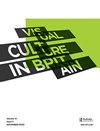Round Table: Queer Lifestyles, Politics and Curating Now
Q2 Arts and Humanities
引用次数: 0
Abstract
These three thought-provoking pieces were originally conceived of as a tripartite round table discussion at the end of our conference ‘Exploring Queer Cultures and Lifestyles in the Creative Arts in Britain c.1885–1967’ held at the LondonCollege of Fashion inMay2016.DeliveredbyMichaelHatt, Elizabeth Wilson andClare Barlow, they formed semi-scripted responses to the searching papers, lively questions and animated discussions that occurred on that day. Our aim in including them within this special issue of Visual Culture in Britain as three short texts is to retain the freshness and flavour of the plenary as a provocation and reflection at the culmination of a lively conference. We see, in the pages that follow, the perspectives of differentgeneration authors from varied disciplinary backgrounds who had spent the day engaging with the contemporary problematic of framing the insights of gay and lesbian studies and queer theory in relation to the examination of the historical past approached from the contemporarymoment. ForHatt, it is the shifting and complex realignment of lived experience and biographywith contemporary gay lifestyle and the ill-fitting intersection of earlier fluid historical identities with today’s non-normative sexualities that is challenging. For Wilson, it is the bold claims made about the transgressive nature of queer studies that is open to reviewas the contradictions of the assimilation of earlier Lesbian and Gay radical politics becomes increasingly commonplace and itsmainstreamappropriationmore troublesome.And for curatorBarlow, it is the potentialities that experimental exhibition-making has for publicly engagingwider audienceswith queer artists (LGBTQ+or not), their artworks and its queer complexities through their encounters in the gallery spaces of thenationalmuseum that is exciting at the timeof Tate Britain’s ‘QueerBritish Art, 1861–1967’ show. We thank them for allowing us to publish them here.圆桌会议:酷儿的生活方式、政治和现在的策展
这三件发人深省的作品最初被设想为2016年5月在伦敦时装学院举行的“探索1885–1967年英国创意艺术中的酷儿文化和生活方式”会议结束时的三方圆桌讨论。由MichaelHatt、Elizabeth Wilson和Clare Barlow交付,它们对搜索论文形成了半脚本式的回应,当天发生的生动的问题和热烈的讨论。我们将它们作为三个简短的文本纳入本期《英国视觉文化》特刊的目的是保持全体会议的新鲜感和风味,作为一次生动会议高潮的挑衅和反思。在接下来的几页中,我们看到了来自不同学科背景的不同一代作者的观点,他们花了一天的时间来处理当代问题,即从当代审视历史的角度来构建同性恋研究和酷儿理论的见解。对哈特来说,正是生活经历和传记与当代同性恋生活方式的转变和复杂调整,以及早期流动的历史身份与当今非规范性行为的不恰当交叉,才是具有挑战性的。对威尔逊来说,随着早期女同性恋和男同性恋激进政治同化的矛盾变得越来越普遍,其主流化也越来越麻烦,正是对酷儿研究越轨本质的大胆主张才有可能被重新审视。对于策展人巴洛来说,在泰特英国美术馆(Tate Britain)的“1861-1967年酷儿英国艺术展”(QueerBritish Art,1861-1967)上,实验性展览制作有潜力让更多观众通过在国家博物馆的画廊空间中的相遇,公开接触酷儿艺术家(无论是否为LGBTQ+)、他们的艺术作品及其酷儿复杂性。我们感谢他们允许我们在这里发布它们。
本文章由计算机程序翻译,如有差异,请以英文原文为准。
求助全文
约1分钟内获得全文
求助全文
来源期刊

Visual Culture in Britain
Arts and Humanities-Visual Arts and Performing Arts
CiteScore
0.60
自引率
0.00%
发文量
1
 求助内容:
求助内容: 应助结果提醒方式:
应助结果提醒方式:


